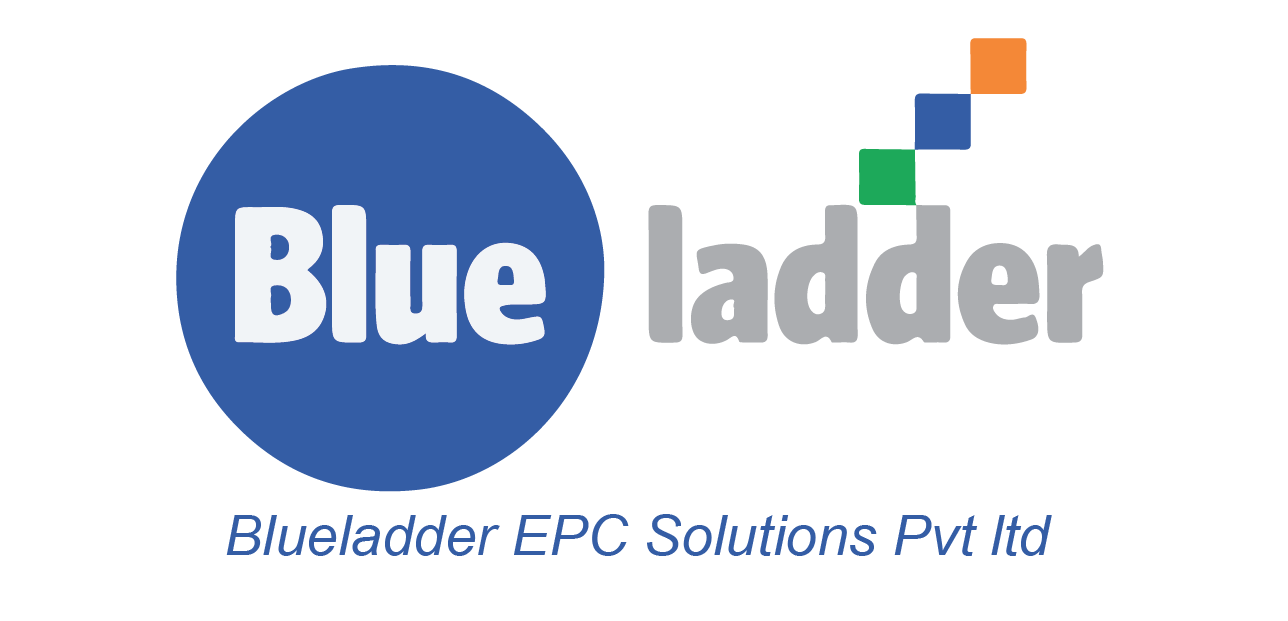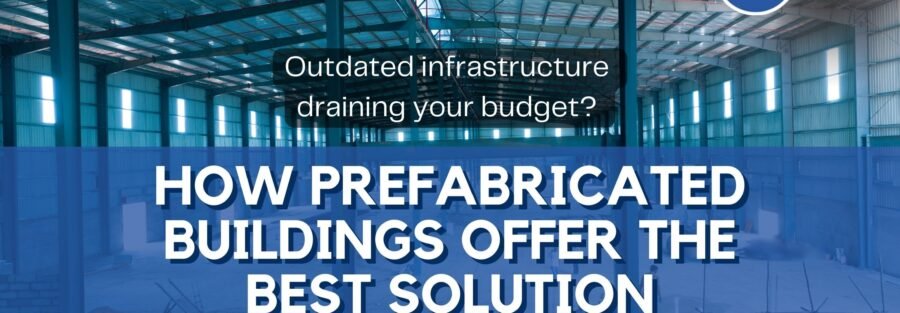

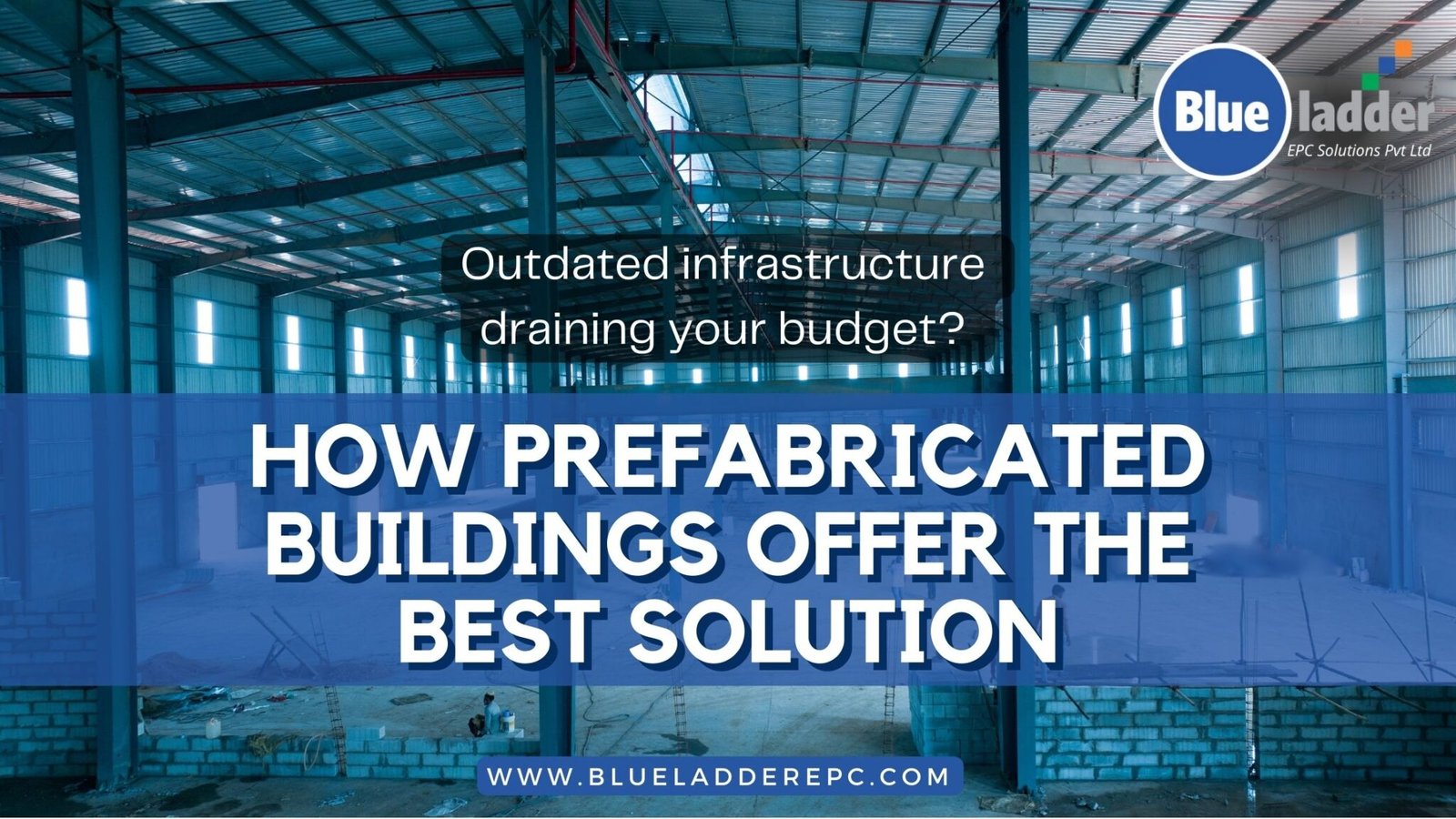
One significant challenge many organizations encounter is outdated infrastructure. Whether it’s aging office buildings, manufacturing facilities, or warehouses, outdated structures not only hinder productivity but also quietly drain financial resources. While many companies continue to pour money into repairs and maintenance, a smarter, more economical solution exists for prefabricated buildings.
These structures are gaining immense popularity due to their versatility and eco-friendly nature. Let’s dive into why outdated infrastructure is a financial liability and how prefabricated buildings can revolutionize your business operations.
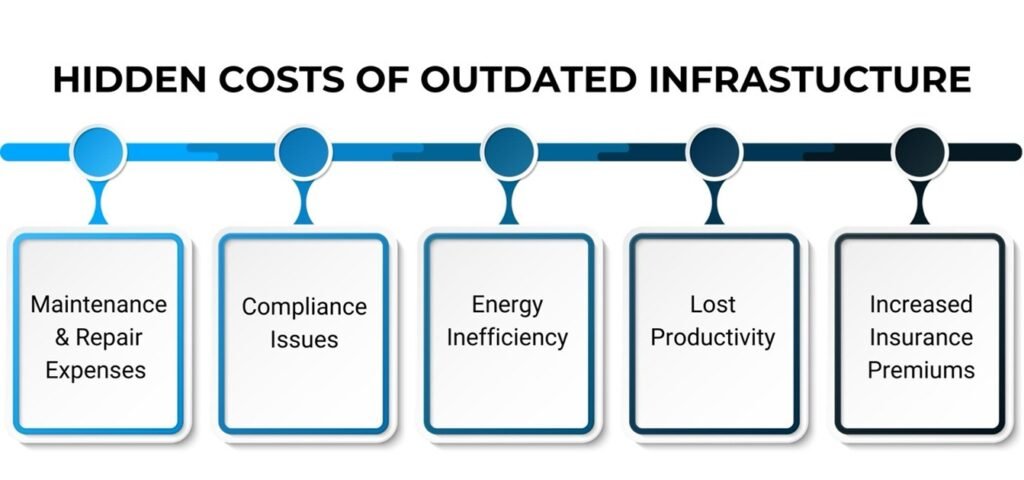
While an old building may seem functional on the surface, it often comes with hidden costs that can cripple an organization’s budget over time. Some of these costs include:
1. Maintenance and Repair Expenses: Old buildings demand continuous upkeep. From leaky roofs to faulty HVAC systems and outdated electrical wiring, these small repairs add up. A structure built decades ago may not have been designed to handle modern equipment or needs, leading to regular breakdowns and inefficiencies. These frequent repairs can drain an organization’s finances, often requiring emergency fixes that are both costly and time-consuming.
2. Energy Inefficiency: Older buildings tend to be less energy-efficient than modern structures. They often lack proper insulation, energy-efficient windows, or modern heating, ventilation, and cooling (HVAC) systems. As a result, companies pay more for heating and cooling throughout the year. Energy inefficiency not only increases utility bills but also contributes to a larger carbon footprint, putting additional strain on the environment.
3. Lost Productivity: Working in an outdated infrastructure can directly impact employee productivity. Poor lighting, ineffective HVAC systems, and cramped, outdated layouts can all lead to uncomfortable working conditions. Employees who are uncomfortable or distracted by faulty infrastructure are less likely to perform at their best, leading to diminished output and morale. Additionally, if a building isn’t equipped to handle modern technology or machinery, workflows may slow down significantly.
4. Compliance Issues: As regulations evolve, outdated infrastructure may fail to meet modern safety and compliance standards. Whether it’s fire codes, structural integrity requirements, or environmental regulations, ensuring compliance in an aging structure can result in significant costs. Ignoring these updates can lead to fines, lawsuits, and even the shutdown of operations.
5. Increased Insurance Premiums: Old buildings are often seen as a liability by insurance companies. They are more likely to incur structural issues or experience fires, water damage, or other risks. Consequently, businesses occupying outdated infrastructure tend to face higher insurance premiums, which chip away at the bottom line.
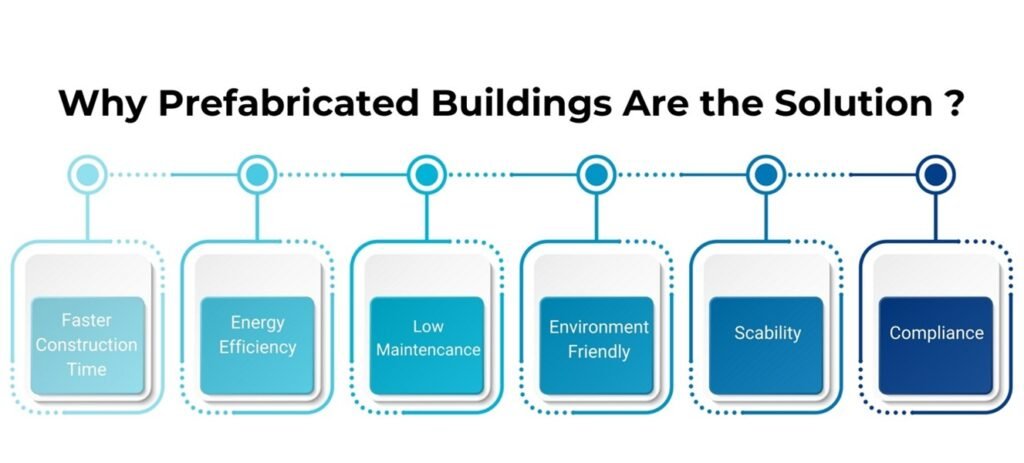
Prefabricated buildings offer a range of benefits that address the financial and operational challenges associated with outdated infrastructure. Let’s explore how they can enhance productivity.
1. Faster Construction Time: Time is money, and prefabricated buildings can be constructed much faster than traditional buildings. On-site construction for prefab buildings can be completed in weeks rather than months or years. Since much of the building process occurs in a factory, weather delays and other common site-related issues are minimized. This speed is particularly beneficial for businesses that need to expand quickly or want to minimize disruption to daily operations.
2. Energy Efficiency: Most prefabricated buildings are designed with energy efficiency in mind. They are constructed with modern insulation materials, energy-efficient windows, and advanced HVAC systems that reduce energy consumption. Prefab buildings also allow for the integration of renewable energy solutions like solar panels. As a result, businesses can significantly lower their utility bills and reduce their carbon footprint. The long-term savings from energy efficiency alone can be substantial.
3. Durability and Low Maintenance: Prefabricated buildings are designed to last, using high-quality materials that often exceed traditional construction standards. They are built to withstand harsh weather conditions and require minimal maintenance over time. Modern prefab buildings come equipped with durable materials that resist rust, mold, and pests, reducing the need for frequent repairs and upkeep. This durability translates to long-term savings in maintenance and repair costs.
4. Environmentally Friendly: As businesses increasingly focus on sustainability, prefabricated buildings offer an eco-friendly alternative to traditional construction. Since the building components are manufactured in a factory, there is less waste generated during construction. The energy efficiency of these buildings further reduces the environmental impact, making them a responsible choice for companies looking to minimize their ecological footprint.
5.Scalability: As your business grows, prefabricated buildings can easily scale to meet your needs. Modular components can be added to existing structures without the need for complete teardown or reconstruction. This scalability allows for quick expansion without significant downtime, making it easier to respond to changing market demands.
6. Compliance with Modern Regulations: Since prefabricated buildings are designed with modern codes and regulations in mind, they are often fully compliant with safety, fire, and environmental standards. This minimizes the risk of costly upgrades or legal issues that can arise from using outdated infrastructure. Prefab buildings also allow for the integration of safety features like fire suppression systems and secure access points, ensuring that your operations are both safe and compliant.
In today’s fast-paced business environment, continuing to operate in outdated infrastructure can be a costly mistake. The hidden costs of maintaining old buildings—ranging from frequent repairs and high energy bills to compliance issues and lost productivity—can weigh heavily on your budget. Prefabricated buildings offer a modern, efficient, and cost-effective solution.
By investing in prefabricated buildings, businesses can reduce construction and operational costs, improve energy efficiency, and scale their operations with ease. Prefab structures are not just a smart financial choice—they are a strategic investment in the future success and sustainability of your business.
If you’re still relying on outdated infrastructure, now is the time to consider how prefabricated buildings can revolutionize your operations and set your business on a path toward long-term growth and efficiency.
Visit our website – www.blueladderepc.com Or call us @ +917887414755
and get detailed knowledge and information regarding the services we offer.


